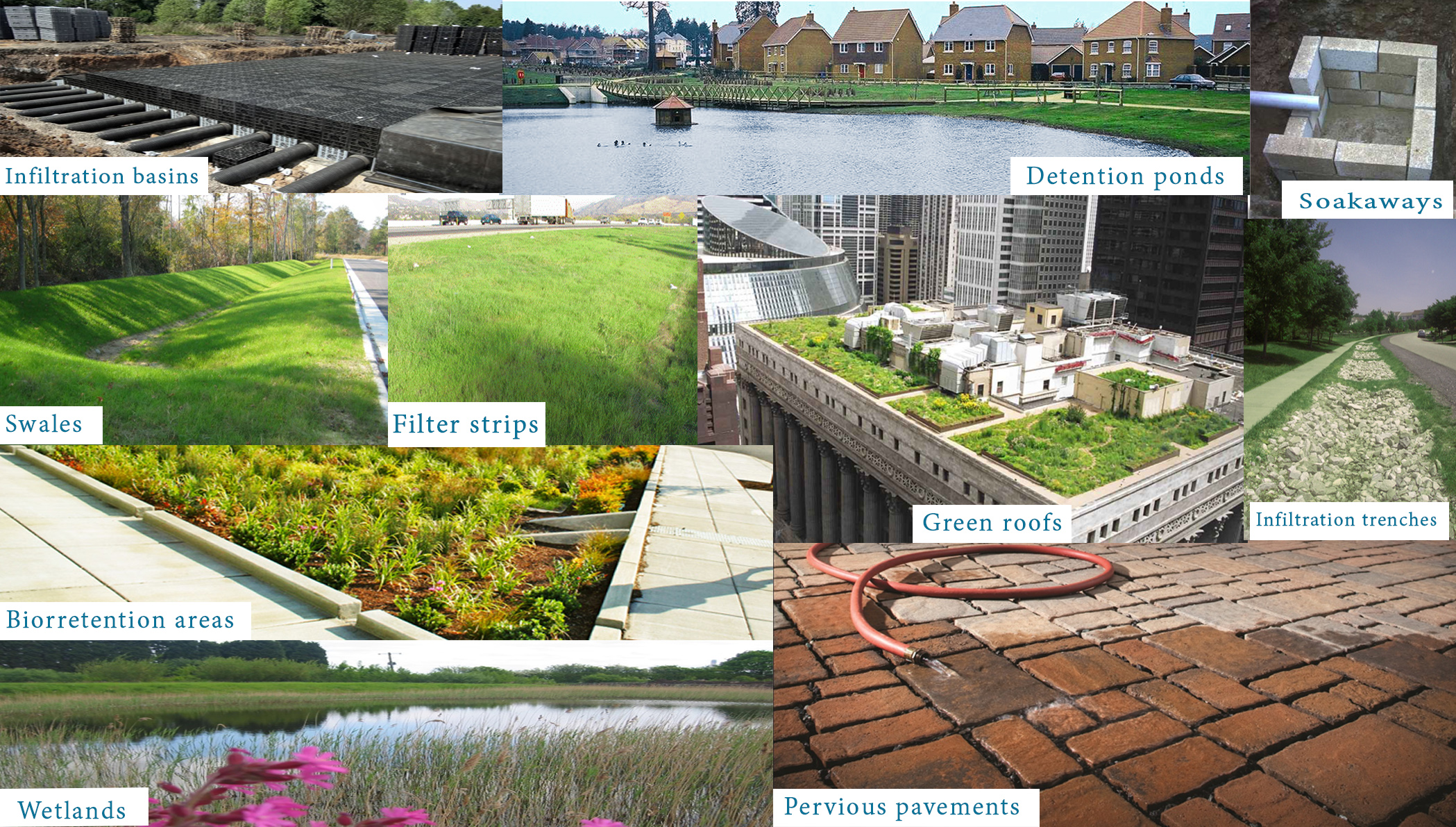As urbanization intensifies, managing surface water becomes increasingly crucial to mitigate flooding risks and enhance urban resilience. This article explores the concept of Sustainable Urban Drainage Systems (SUDS) as innovative approaches to managing surface water in urban areas. By integrating natural and engineered solutions, SUDS mitigate flood risks, improve water quality, and promote sustainable urban development in the face of climate change and urbanization pressures.
Green Roofs and Rain Gardens
Green roofs and rain gardens are integral components of SUDS that manage surface water by absorbing rainwater, reducing stormwater runoff, and mitigating urban heat island effects. These nature-based solutions enhance flood resilience, improve water quality, and provide habitat for urban biodiversity, contributing to sustainable urban development and community well-being in urban areas facing the impacts of climate change and rapid urbanization.
Permeable Pavements and Infiltration Basins
Permeable pavements and infiltration basins are engineered solutions that promote infiltration and groundwater recharge, reducing surface water runoff and alleviating pressure on urban drainage systems. These SUDS features capture and store rainwater, filter pollutants, and reduce flooding risks, enhancing urban resilience and supporting sustainable water management practices in urban areas experiencing increased urbanization and impervious surfaces.
Constructed Wetlands and Sustainable Drainage Channels
Constructed wetlands and sustainable drainage channels are multifunctional SUDS features that manage surface water by providing natural flood defenses, improving water quality, and enhancing urban biodiversity. These nature-based solutions create habitats for wildlife, promote ecological resilience, and contribute to the aesthetic and recreational value of urban green spaces, fostering community engagement and enhancing the overall resilience of urban areas to flooding and climate change impacts.
Integrated Water Management and Green Infrastructure Planning
Integrated water management approaches and green infrastructure planning frameworks integrate SUDS with urban planning, development regulations, and community engagement strategies to promote sustainable water management and enhance urban resilience. By considering the interconnectedness of water systems, land use patterns, and natural ecosystems, these approaches support resilient and sustainable urban development in the face of climate change, population growth, and urbanization pressures.
Public Engagement and Community-Based Water Management
Public engagement and community-based water management initiatives are essential for the successful implementation of SUDS projects in urban areas. Engaging stakeholders, including residents, businesses, and local organizations, in the planning, design, and maintenance of SUDS features fosters ownership, builds social capital, and promotes community resilience. By involving communities in decision-making processes and empowering them to participate in water management efforts, cities can enhance their resilience to flooding and promote sustainable water management practices at the local level.

